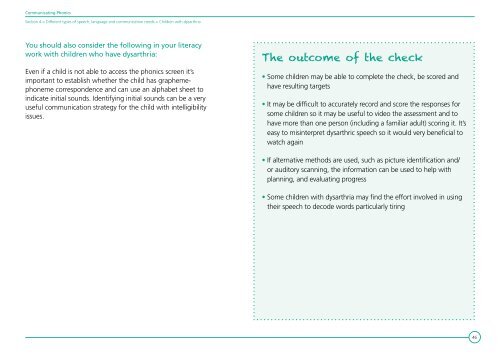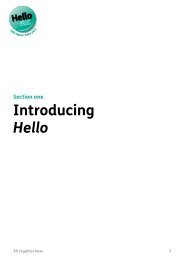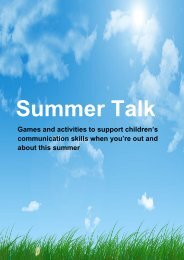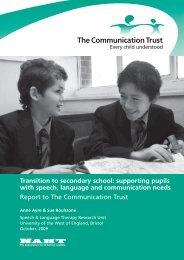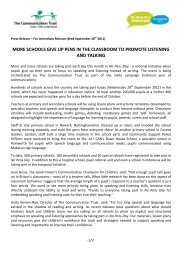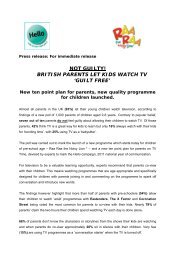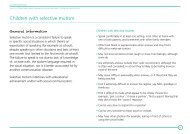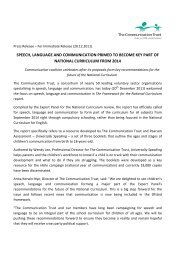Communicating Phonics - The Communication Trust
Communicating Phonics - The Communication Trust
Communicating Phonics - The Communication Trust
Create successful ePaper yourself
Turn your PDF publications into a flip-book with our unique Google optimized e-Paper software.
<strong>Communicating</strong> <strong>Phonics</strong>Section 4 > Different types of speech, language and communication needs > Children with dysarthriaYou should also consider the following in your literacywork with children who have dysarthria:Even if a child is not able to access the phonics screen it’simportant to establish whether the child has graphemephonemecorrespondence and can use an alphabet sheet toindicate initial sounds. Identifying initial sounds can be a veryuseful communication strategy for the child with intelligibilityissues.<strong>The</strong> outcome of the check• Some children may be able to complete the check, be scored andhave resulting targets• It may be difficult to accurately record and score the responses forsome children so it may be useful to video the assessment and tohave more than one person (including a familiar adult) scoring it. It’seasy to misinterpret dysarthric speech so it would very beneficial towatch again• If alternative methods are used, such as picture identification and/or auditory scanning, the information can be used to help withplanning, and evaluating progress• Some children with dysarthria may find the effort involved in usingtheir speech to decode words particularly tiring46


